- News
- Reviews
- Bikes
- Components
- Bar tape & grips
- Bottom brackets
- Brake & gear cables
- Brake & STI levers
- Brake pads & spares
- Brakes
- Cassettes & freewheels
- Chains
- Chainsets & chainrings
- Derailleurs - front
- Derailleurs - rear
- Forks
- Gear levers & shifters
- Groupsets
- Handlebars & extensions
- Headsets
- Hubs
- Inner tubes
- Pedals
- Quick releases & skewers
- Saddles
- Seatposts
- Stems
- Wheels
- Tyres
- Tubeless valves
- Accessories
- Accessories - misc
- Computer mounts
- Bags
- Bar ends
- Bike bags & cases
- Bottle cages
- Bottles
- Cameras
- Car racks
- Child seats
- Computers
- Glasses
- GPS units
- Helmets
- Lights - front
- Lights - rear
- Lights - sets
- Locks
- Mirrors
- Mudguards
- Racks
- Pumps & CO2 inflators
- Puncture kits
- Reflectives
- Smart watches
- Stands and racks
- Trailers
- Clothing
- Health, fitness and nutrition
- Tools and workshop
- Miscellaneous
- Buyers Guides
- Features
- Forum
- Recommends
- Podcast
The most common bike fit mistakes and how to avoid them: nail your saddle height, cleat set-up and more with these top tips
Are you uncomfortable on the bike? Do you seem to always be fending off an injury, or do you struggle to crank the power out? In this article and video, hopefully we can solve some or all of those for you by identifying some common reasons why your bike fit might be the thing holding you back, with lots of tips from an expert to remedy them.
A few months ago we identified 11 bike fit tips to get us more comfortable and riding faster, but what about all the things we should avoid? As a professional bike fitter, Luke Craddock of Synergy Performance has seen it all, so here are the 10 most common bike fit mistakes that come through his door.
Saddle too high
It's unsurprising that saddle height tops this list, but it's also one of the easiest to remedy. Craddock says: "It's very rare that someone comes in and their saddle height doesn't need adjusting.
"7/10 times I'm putting people's saddles down rather than up."
He explains that excessive saddle height can sometimes initially feel better and more powerful, but is also a primary cause of discomfort due to instability on the saddle.
Having your saddle too high will also cause your cycling to be quad-dominant, while lowering it could allow you to unlock additional strength and lactate-clearing ability.
Excessive saddle height can cause all manner of problems from "numb hands, numb feet, back pain, saddle sores etc..."
Poorly fitting shoes
Our bike fitter explained that the majority of cyclists don't "respect their foot shape" when purchasing new cycling shoes.
Many cycling shoes follow a traditional sleek-looking form, which might look good but probably isn't the best option for many of us.
"A British person doesn't have that type of foot", says Craddock.
"We have a shorter, more box [shaped] foot with a lot of width and potential collapsing of an arch which plays the foot further."
Often people then size up shoes to accommodate this width, which puts the cleats in the wrong place. Craddock suggests standing on a piece of paper and drawing around your relaxed foot. Compare this to the shape of your cycling shoe soles, and if it's a very different shape then there's a good chance that you're in the wrong shoes.
By letting the foot relax you can calm your nervous system, which Craddock says will benefit not only comfort, but also performance: "Your shoes are the one area I'd recommend investing in, extra money here will be way better than any upgrade you can make on your bike."
Cleats too far forwards
While sizing up shoes is a contributor to incorrect cleat positioning, it is of course all too possible even in good-fitting shoes. Craddock told us that there's a lot of contradicting advice available online, but that many riders will benefit from moving their cleats further back.
If you're unsure whether this applies to you, Craddock recommends taking the insoles out of your shoes and looking for wear. If your insoles are worn at the toe area, then your foot likely isn't being an overly efficient lever, and you might benefit from moving your cleats rearwards to help reduce strain on stabilising ligaments in the ankle and knees.
Tilting down saddles
According to Craddock, dipping the nose of a saddle is a tell-tale sign that there's something wrong with a rider's bike fit. In his experience, it's compensating for another issue more often than not.
Craddock explained that this is often caused by excessive saddle height or unsupported sit bones. While tilting the saddle can reduce soft tissue pressure, riders should be hesitant as it will move their weight to the front end of the bike.
He adds: "Numbness in the hands, lower back pain and tightness in the shoulders can all stem from the nose being tipped down."
Insufficient stance or Q-Factor
Q-Factor is the distance between the outer crank faces on your bike, but in this instance, we are referring to stance width, which is the distance between how far apart your feet are when cycling.
Craddock says: "While there are some people who will benefit from going narrower, the vast majority of riders that I see struggle with at least some hip impingement when riding with a narrow Q-Factor."
There are lots of ways in which you can change your stance on the bike. You can in some instances use pedal washers, and some pedal manufacturers offer different spindle lengths. Time's recently released pedals are available with three different spindle lengths, as one example. You could also use pedal adaptors.
You can also move your cleats, but as Craddock points out this is one of the areas with the smallest adjustability on the bike. Out-the-box cleats only usually offer 4mm of adjustment either way, which is much less than the variety in rider stances.
The wrong crank length
"Generally cranks are too long, especially for women"
Most of us aren't fortunate enough to have the same range of motion or functionality as a pro cyclist, and using cranks that are too long combined with inflexible hip flexors can be a limiting factor for many cyclists. This can cause riders to compensate, doing things such as "flaring their knees out at the top of a pedal stroke".
> Are shorter cranks better on your bike?
"Most riders will find very few negatives switching to shorter cranks, especially those doing steady state efforts", says Craddock.
This is a trend that we've seen in the pro peloton in recent years, with Ineos riders spotted using 165mm cranks. Craddock explains that this could potentially allow them to get more aero, but that comfort is also likely a factor.
Reach too long
Excessive reach will not only cause discomfort, but can also potentially be dangerous. Craddock explains that he's had many riders in for bike fits who have had their bars mounted too far away from them, and have therefore gravitated towards holding the bar further back rather than at the shifter. If you need to move your hands from your comfortable position to brake, this is going to extend your stopping time.
Craddock adds that many people will shift their saddle forwards to counteract excessive reach, but there are better ways as this will disrupt your centre of mass. Instead, it's better to change the front end of the bike. Some bars have different reach, and a new stem is a fairly cheap way of drastically improving your comfort on the bike.
Wrong bar/shifter angle
Craddock says he gets a lot of riders come in with their bars and shifters in a less-than-optimal position. Sometimes this is straight from a bike shop, sometimes it's a conscious choice in an attempt to counteract excessive reach.
A proper shifter position won't just benefit your hand and wrist comfort. Shifters tilted upwards in an attempt to bring them closer are often a cause for neck pain and shoulder tension.
The same can be said for the bars themselves. On a drop bar bike, the dropped portion of the bar should be about parallel to the ground.
Bar width
"It's really common that I see bars too wide."
Bar width isn't just about performance, as using the wrong size can lead to wrist, hand and shoulder pain. If you are changing the width of your handlebar then bear in mind that it will also alter your reach.
Craddock says the bike industry has some improvements to make in this area, especially now bikes are gravitating towards being integrated.
"I see 52cm bikes coming with 42cm bars all the time. It's very rare that anyone of that size has 42cm shoulders, especially women with narrower builds", he adds.
Craddock explained that most riders will be most comfortable on a bar that matches their shoulder width, from joint to joint. Usually this is in the region of 36-38cm for women and 40-42cm for men.
Bikes that just aren't well-suited
Unfortunately our last mistake is a rather expensive one to fix. Craddock explained that bike sizing is not consistent across the board. One manufacturer's size 54cm, for example, can be hugely different to another's.
"This catches people out and by the time you've bought the bike it's too late, that's why I always recommend fit first, buy later", he says.
Most good bike fitters should be able to fit you to your old bike or on a jig, and then recommend the correct size and geometry to suit you.
A new bike is often a significant investment, so it's important to get the right size. If you aren't keen on a bike fit then Craddock recommends studying geometry charts carefully, and DON'T just get a size because it's what you've always ridden -
He adds: "Pay particular attention to the headtube height and stack. You might be better off on a size bigger if you're in-between sizes.
"The range of adjustability is decreasing with increased integration, so it's more important than ever to buy the right size for you.
"I also see a lot of [people] riding on aggressive geometry when it's probably not the best geometry [for them]".
We've long championed endurance bikes at road.cc, and the evidence suggests many riders will be faster, more comfortable and happier riding one.
Let us know if you’ve made any of these bike fit mistakes in the comments section below, as well as any more of your own mistakes that you think we’ve missed.
Jamie has been riding bikes since a tender age but really caught the bug for racing and reviewing whilst studying towards a master's in Mechanical engineering at Swansea University. Having graduated, he decided he really quite liked working with bikes and is now a full-time addition to the road.cc team. When not writing about tech news or working on the Youtube channel, you can still find him racing local crits trying to cling on to his cat 2 licence...and missing every break going...
Latest Comments
- Stephankernow 1 sec ago
No, it needs a barrier like the railway.
- Bungle_52 8 sec ago
There is not enough information in the piece to make any comment on this particular case but on a general note it seems to me that years of...
- whosatthewheel 10 min 16 sec ago
Exactly. We live in a jungle where the stronger always wins.
- David9694 57 min 57 sec ago
That's a clear 2 points awarded there, but I guess as there's now a 25% tariff you'll only get 1.5
- mark1a 1 hour 8 min ago
Fawkes Cycles is only local if you live near Oldham. That's nearly 300 miles away from me. Also, any retailer that doesn't participate in an...
- David9694 1 hour 11 min ago
Openreach under fire over delays to Amesbury cabinet repairs...
- Destroyer666 9 hours 8 min ago
Anodizing the aluminium is also for corrosion resistance and therefore enhances the longevity of the rims while this is not really a case for...
- bobbinogs 10 hours 22 min ago
Wheelsmith has always been very good for me. Malcolm was always very opinionated so I got bored with him telling me I should be riding tubeless,...
- Terry Hutt 10 hours 41 min ago
I assume you can carry an e-bike battery on the tube if you leave the bike at home. ...
- Rendel Harris 11 hours 51 min ago
To rhyme with design. I wondered this myself so looked it up a while ago, according to the founder Micki Kozuschek he and his team had a few...
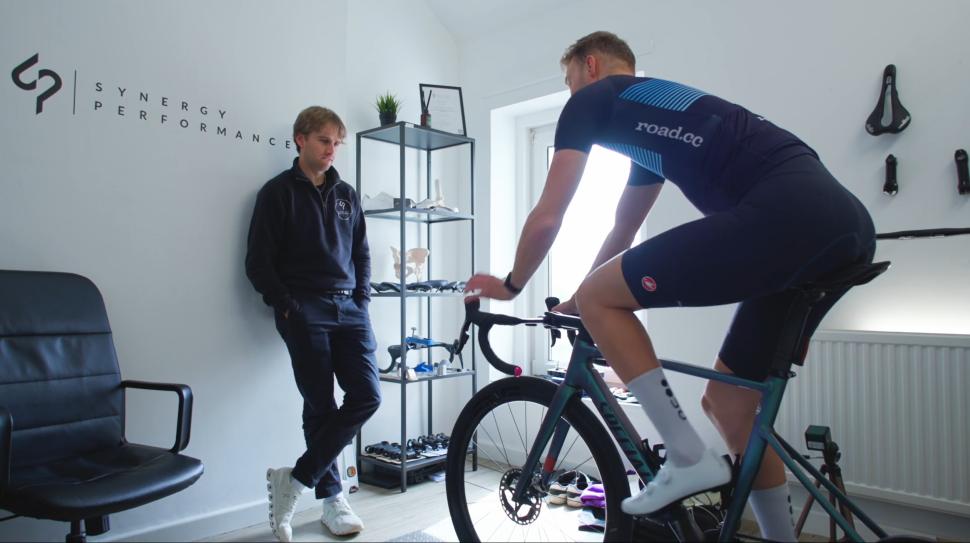
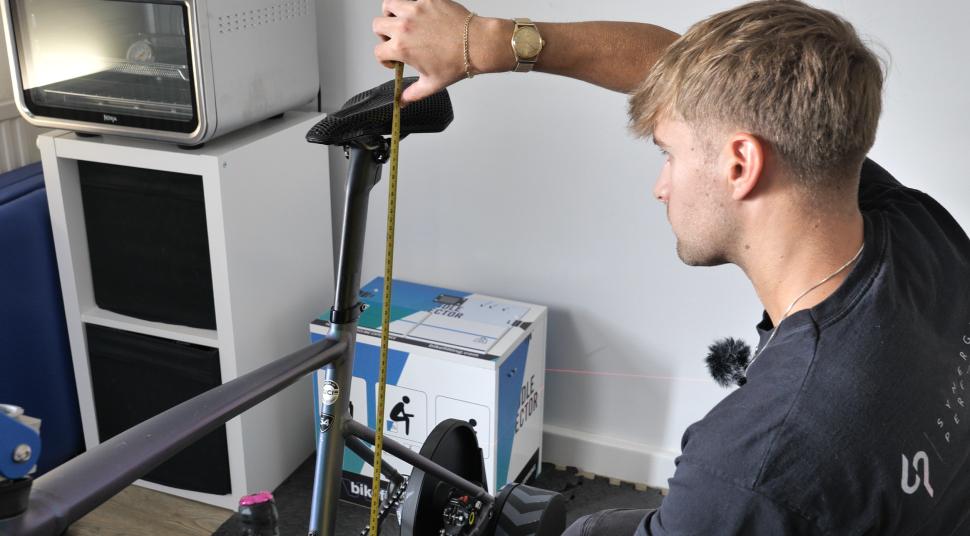
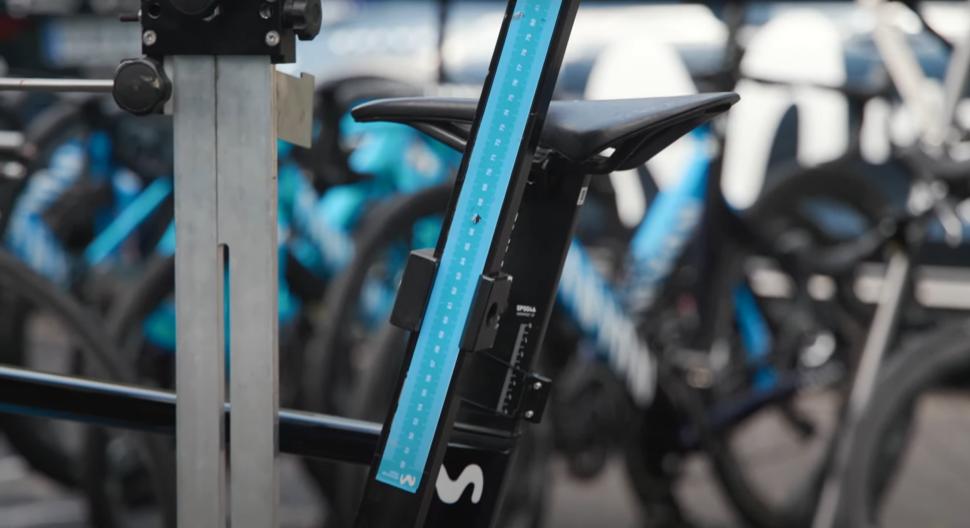
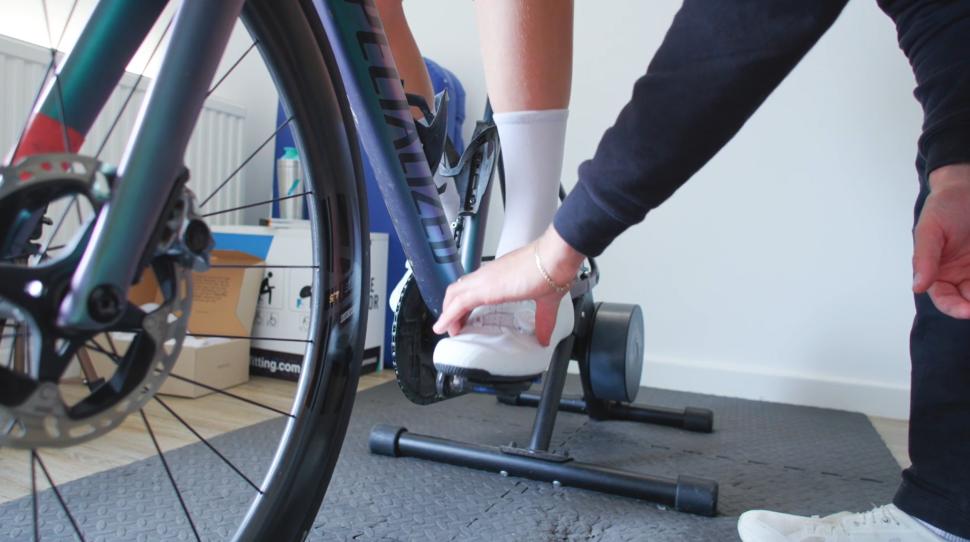


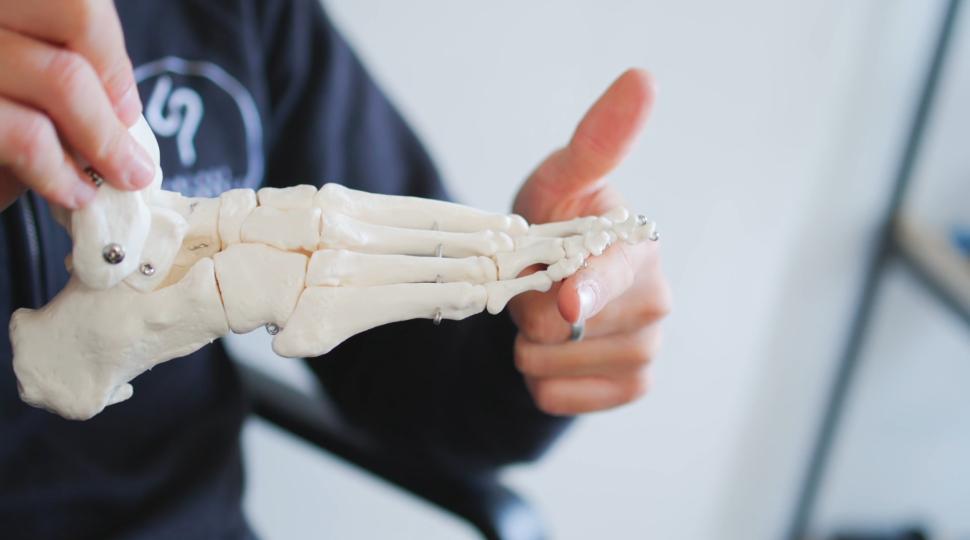
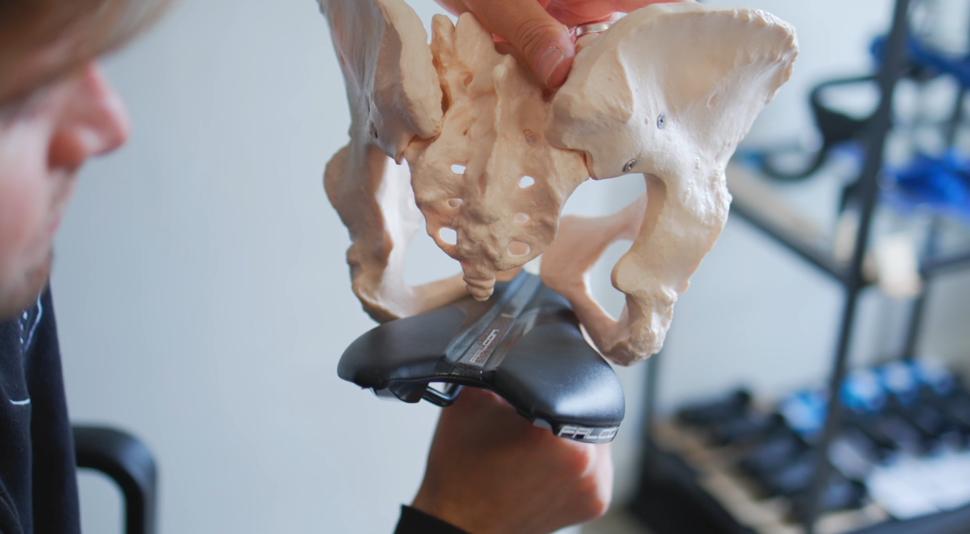
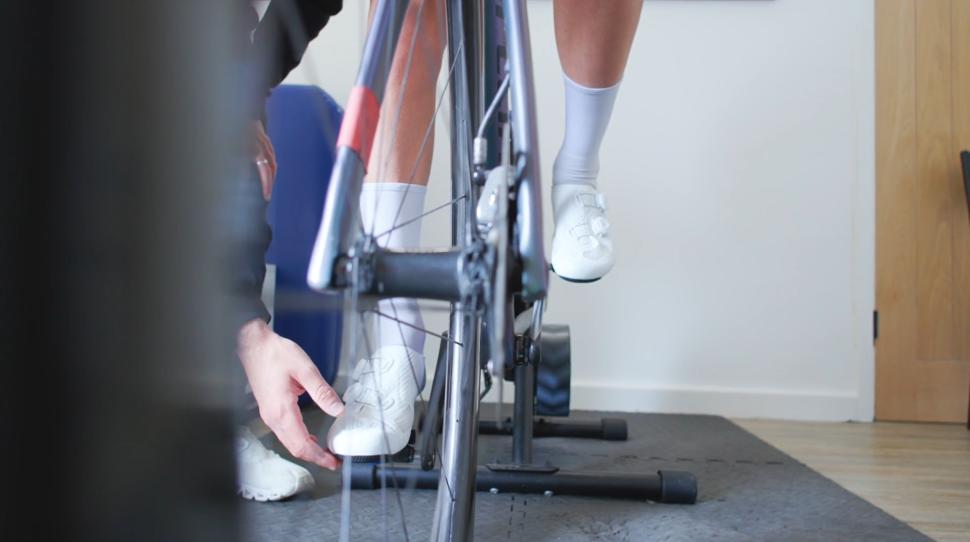
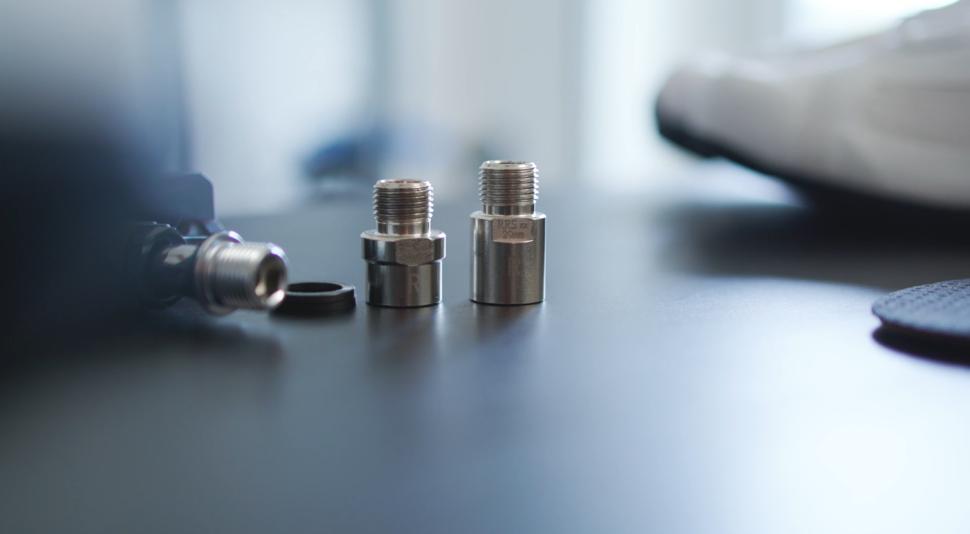
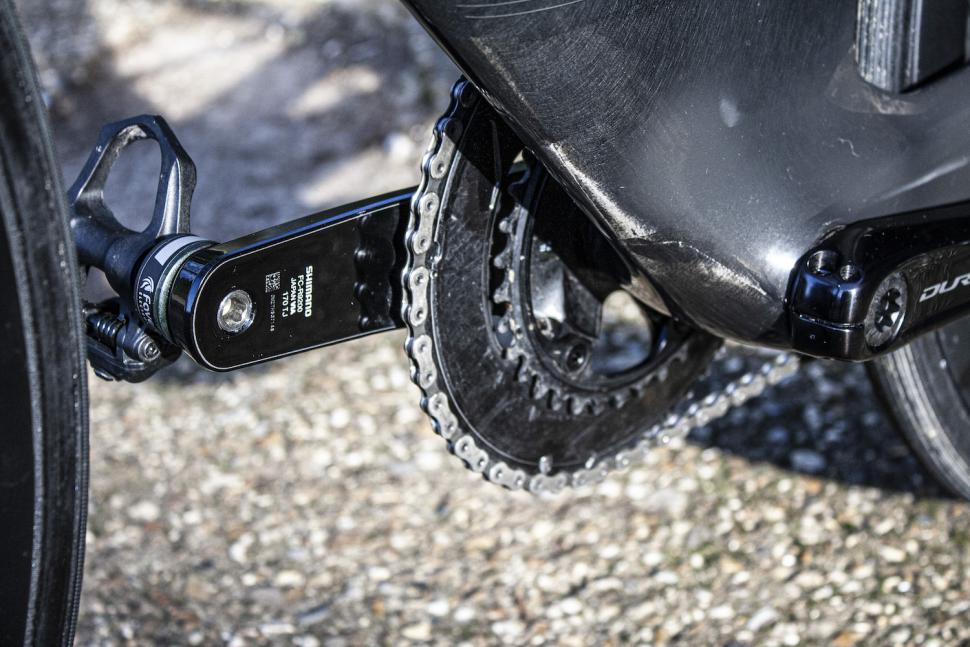
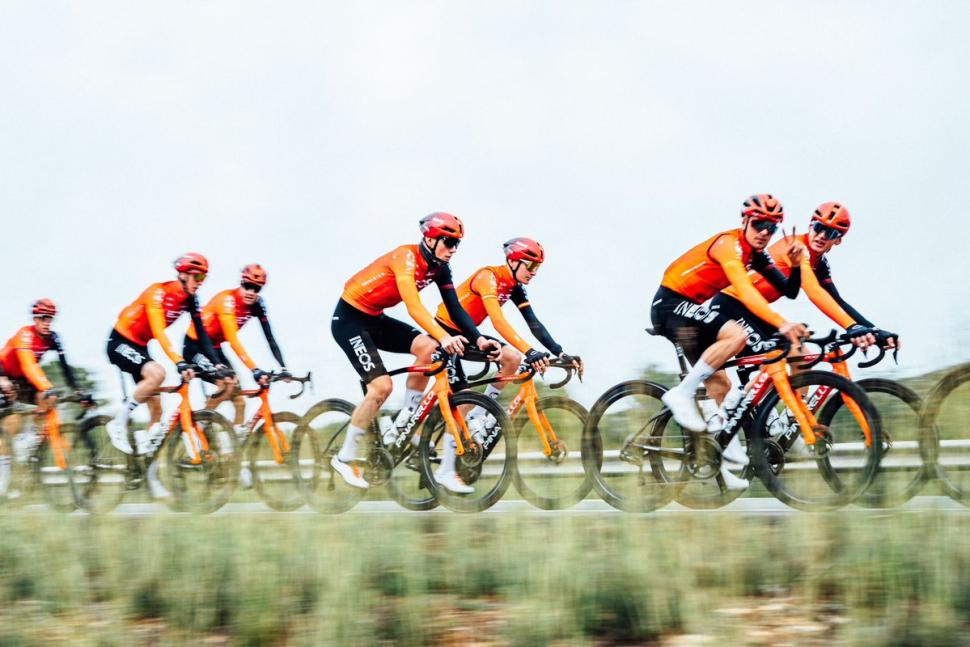
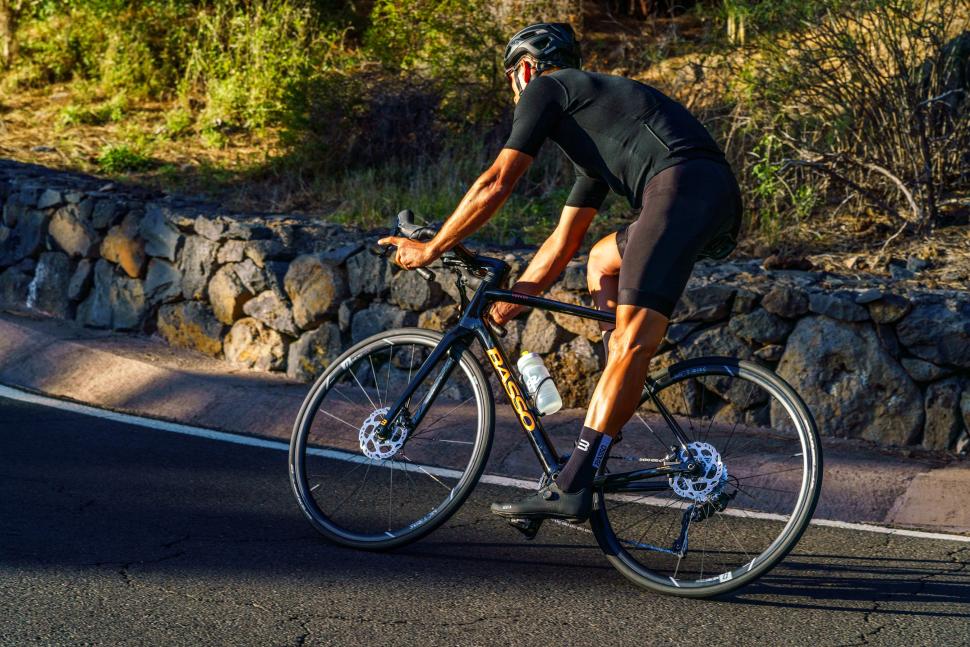
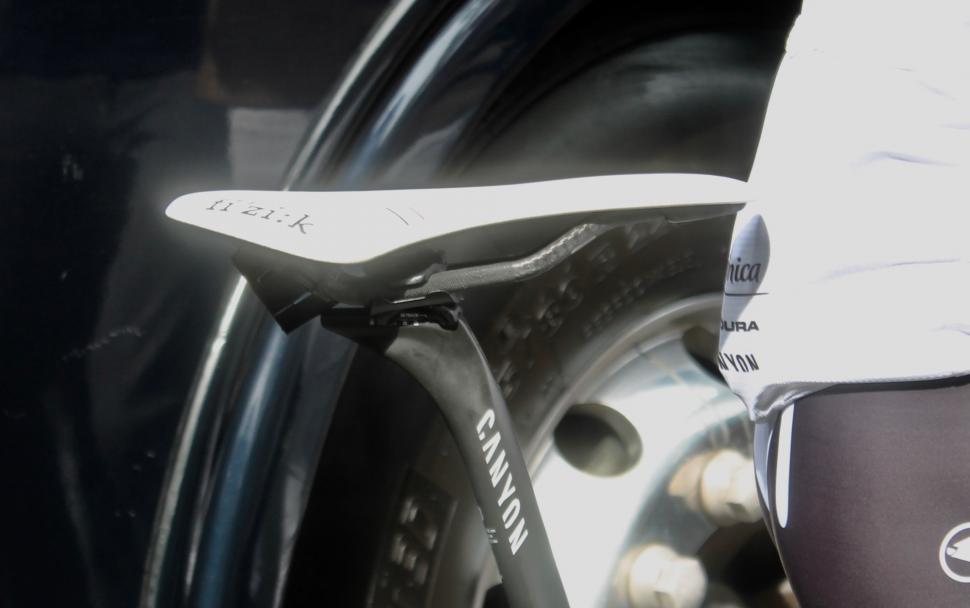
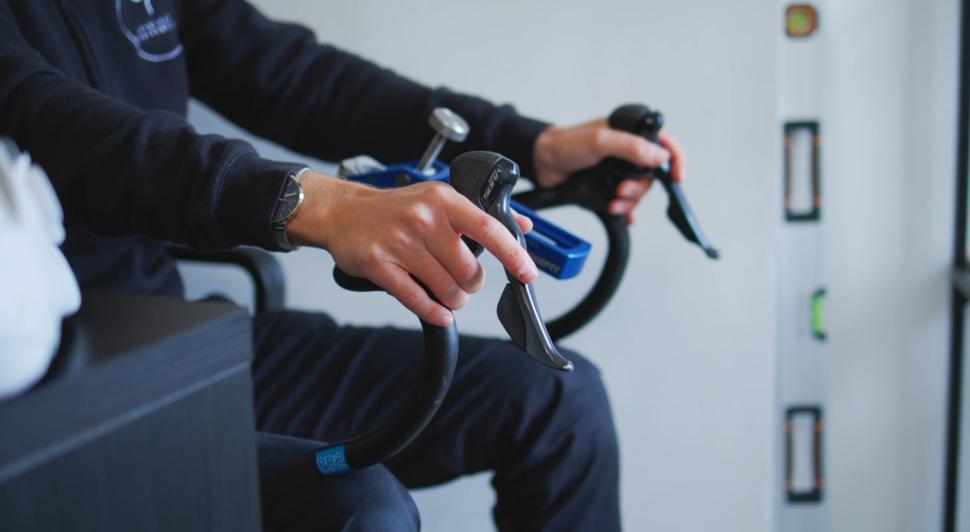
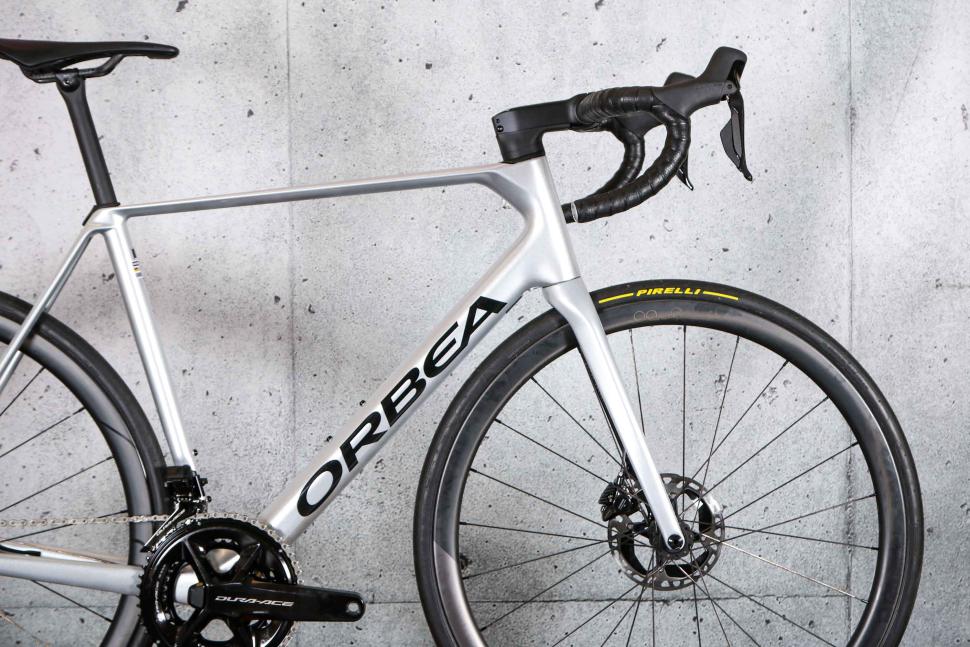
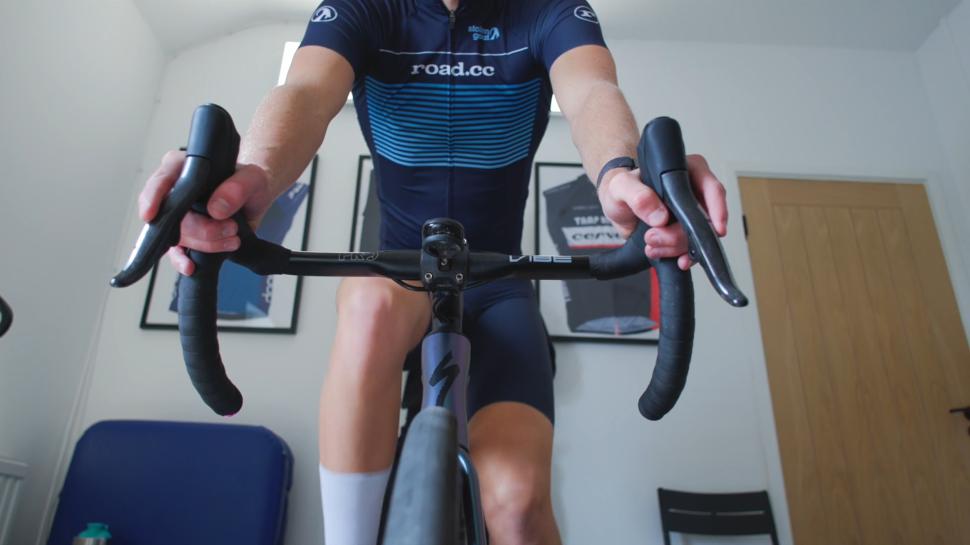
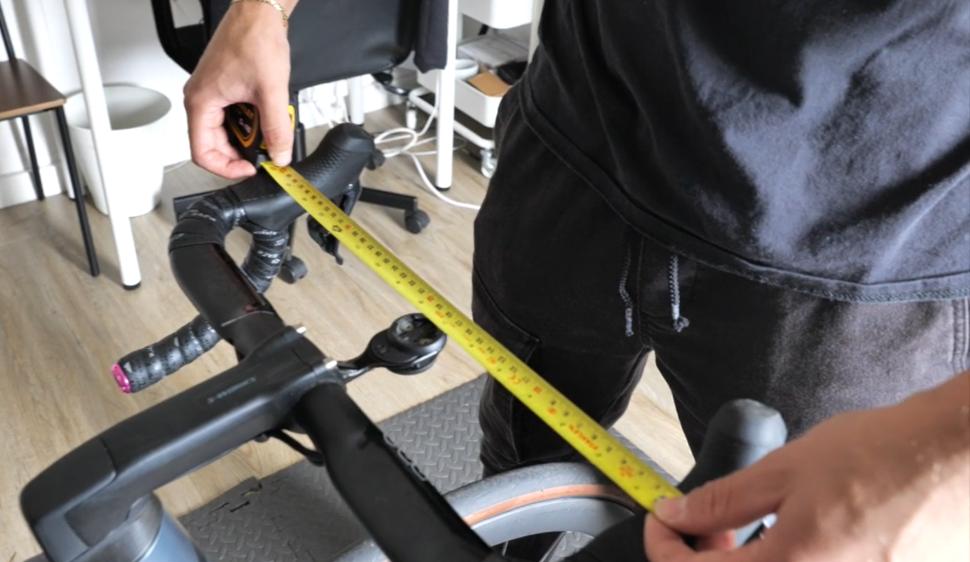

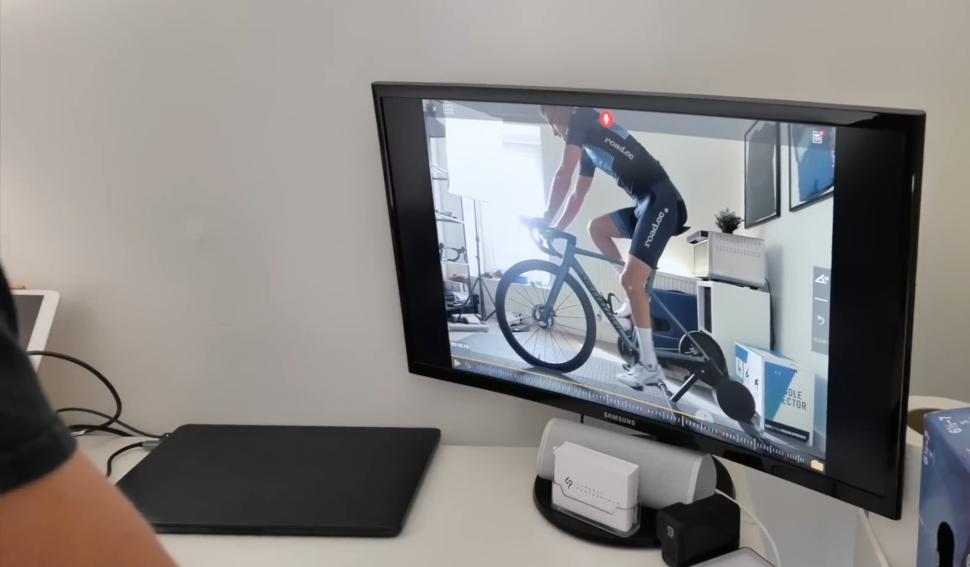

Add new comment
14 comments
If you've a wide foot, try the Lake 238 wide - they're the best thing since god knows.. 👌 (make sure you get the correct length tho)
That's a really interesting piece. It brought up some points I wasn't aware of, so thanks.
Saddle Height
Here's what works for me: I set the saddle height so that when my heel is on the pedal my leg is straight. That gives me a "ball park" position which is reasonably comfortable. Then I follow the late Sheldon Brown's advice:
"I suggest gradually raising your saddle, perhaps half an inch (1 cm) at a time. Each time you raise it, ride the bike. If it doesn't feel noticeably worse to ride, ride it for at least a couple of miles/km.
"If it had been too low before, your bike will feel lighter and faster with the new riding position. If raising the saddle improved things, raise it again, and ride some more. Keep doing this until the saddle is finally too high, then lower it just a bit."
As I said, it works for me. YMMV.
From my experience (and that's all I'll claim) this made me go rather too high. A bike fitter brought my saddle down a lot (35 mm) and it felt pretty awful at the time, but I persisted and ultimately preferred the lower saddle. I wouldn't go back now.
One of my symptoms was hip rocking. One of my club mates had already suggested this to me, and the bike fit tuned that out, reducing hip pain. So it might be worth getting somebody to watch or video from behind as you ride to avoid excess saddle height.
It's astounding that people managed to ride bicycles at all before bike fitters started selling their services to the public..
When I lived in rural West Africa I'd often see quite young kids riding adult size bicycles. They'd be riding sideways with a leg under the crossbar and without sitting on the saddle of course.
Wierd take. There are miles of difference between a little pootle into town on a commute and effort and miles an average Road.CC reader puts in.
Of course a tweaked set up will give you more comfort and power (if power is your thing).
Its like any service - you can faff around doing it yourself over weeks/months, or pay a reasonable sum to get the services of hopefully an expert and get it done then and there.
I definitely found dropping my saddle height a quarter inch a while back was vastly more comfortable and allowed for more positions on the saddle while also permitting a more rounded pedalling style so the same (low) power is more sustainable and less tiring. And 38cm bars are much more aero and even more comfy -I am size m. Otoh cranks on my bikes range from 175 to 165 and I see no great advantages or disadvantages with them.
I would definitely recommend getting professional advice from a bike fitter, particularly if you're prone to picking up niggles with knees, hips, shoulders, etc. Even if they only move stuff around by 5mm here and there, the value is in the knowledge of just which 5mm to adjust.
While I agree, not all bike fitters are equal. I found their know-how varies enormously—some are considerably more expert than others.
I'm now looking at my high, downward pointing saddle and wondering if some more tinkering is needed. My last meddling was swapping the original 100mm stem with a Prime 110mm carbon stem (couldn't resist the Wiggle closing down sale) and moving the saddle forwards a bit with the view of opening up the angle of my hips.
I'll add another vote for short cranks despite being a tall guy. The combination of shorter cranks and a wider stance (Q-factor) was transformative for me—it proved a combo that vanquished injuries and knee niggles.
I wonder if seeing Ineos riders with 165-length cranks will make more riders consider trying shorter cranks❓
I've seen Pogacar on 170 and 165 cranks too
I feel like there's a pretty wide range of tolerance (for me at least) on saddle height. I've made no effort to set my bikes up identically, and one of mine has the saddle significantly lower than the others, enough that I feel like I make less power on it, but it's a city bike so no big deal. Still, I feel fine on any of them for rides of several hours, with occasionally standing up for a few pedal strokes if my saddle area starts to ache.